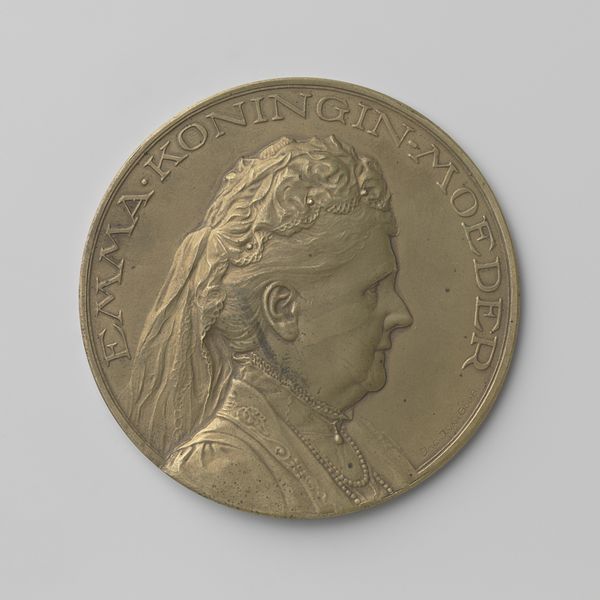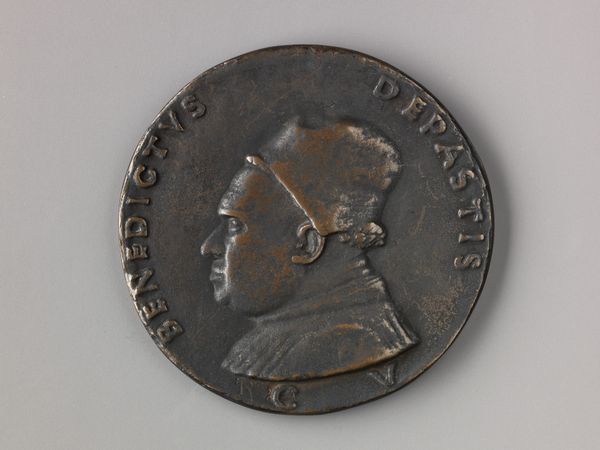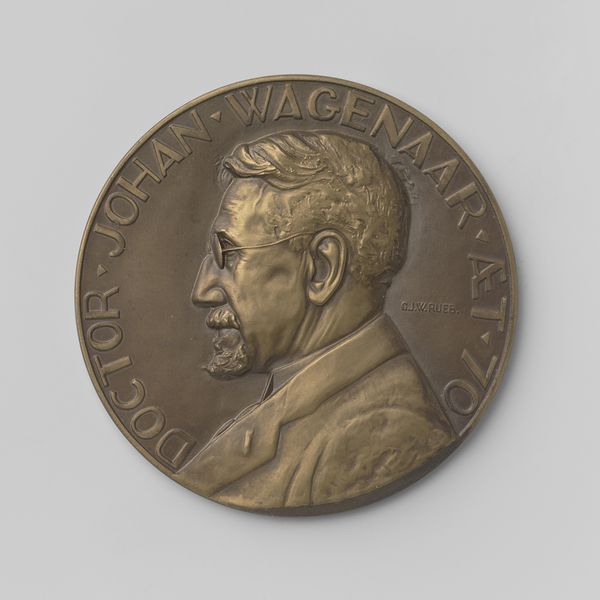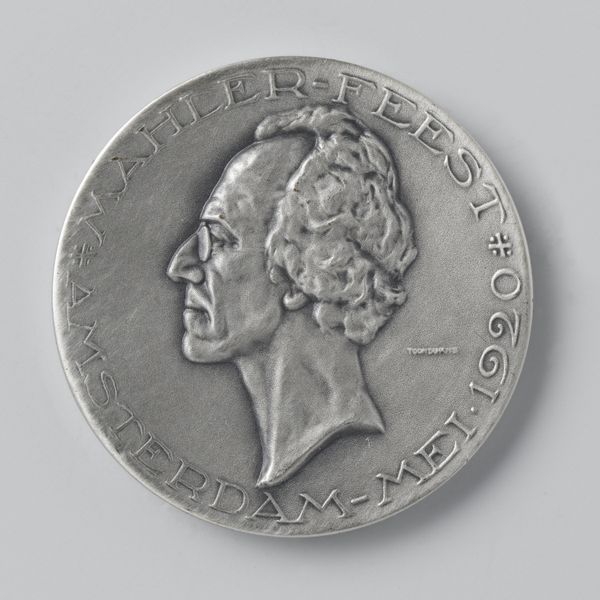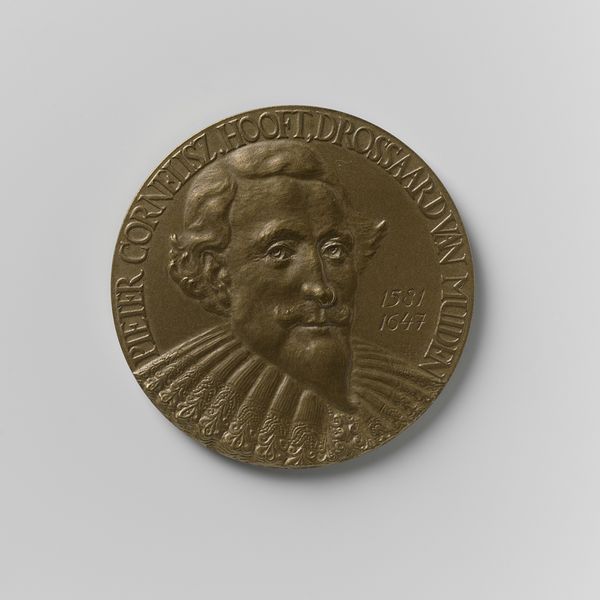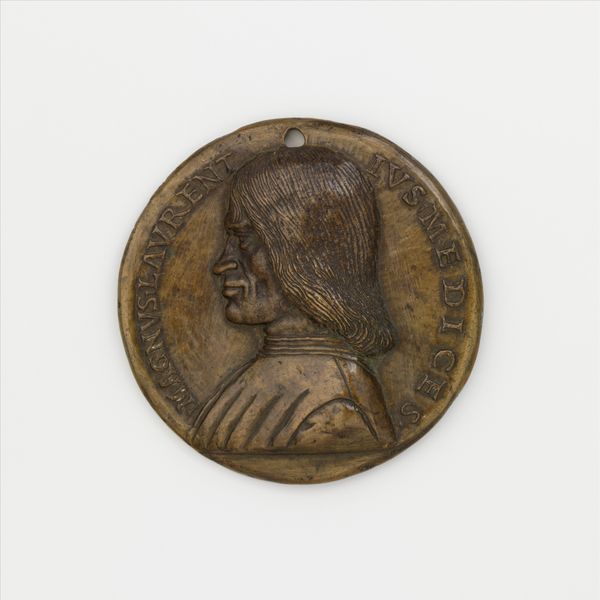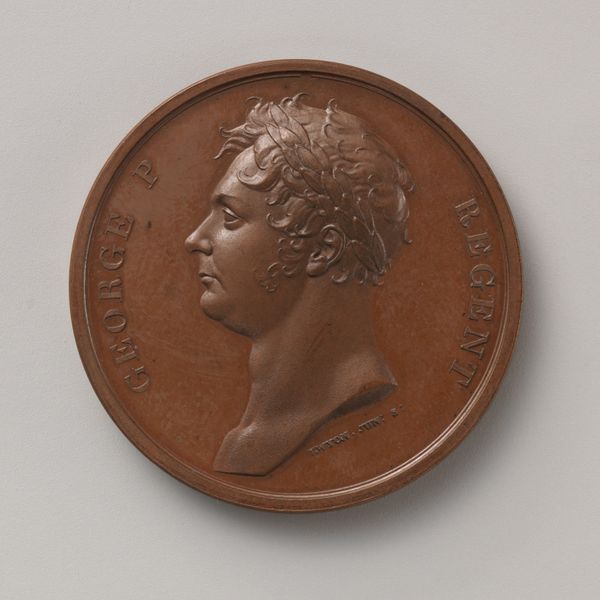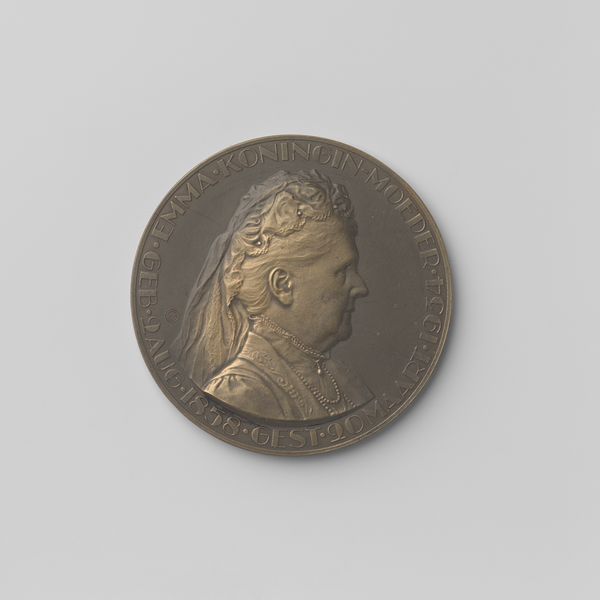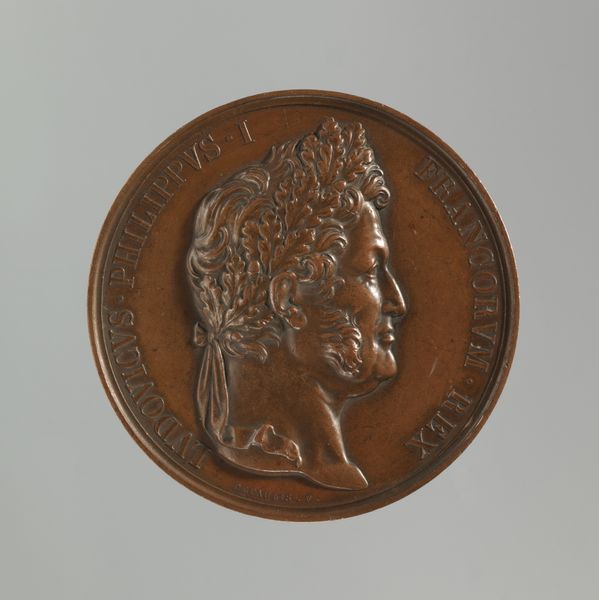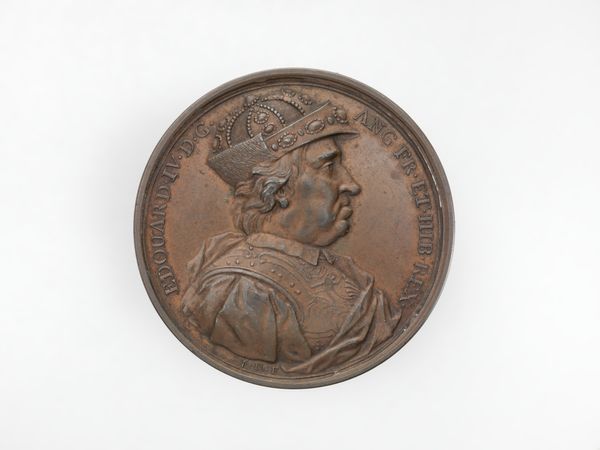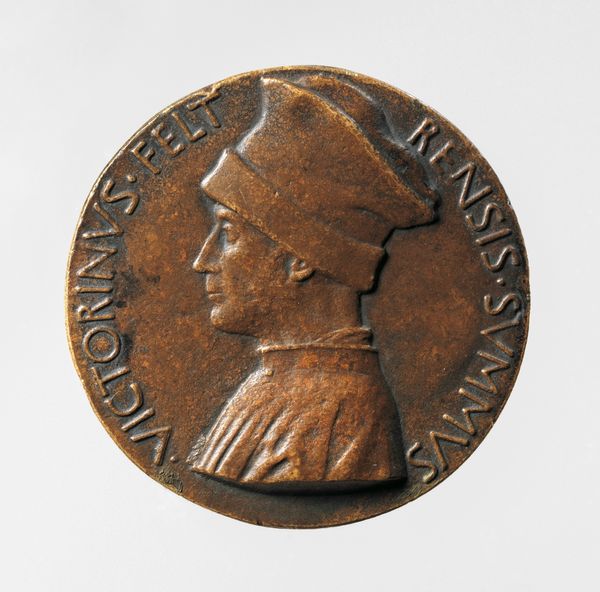
metal, relief, sculpture
#
portrait
#
metal
#
relief
#
coloured pencil
#
sculpture
#
watercolour illustration
#
modernism
Dimensions: diameter 6.0 cm, weight 60.30 gr
Copyright: Rijks Museum: Open Domain
Curator: This bronze relief sculpture is a medal commemorating the "Seventieth Anniversary of Queen Emma" created in 1928 by Jacob Jan van Goor. It's a striking piece. What’s your initial reaction to it? Editor: The profile seems very stoic and formal. There's a definite sense of weightiness, both literally in the material and metaphorically in the subject's depiction. Curator: Absolutely. Commemorative medals like these were very common in the early 20th century to celebrate royalty or mark important historical events. This medal speaks volumes about the role of monarchy at that moment. The inscriptions framing Queen Emma’s portrait immortalize her image for public consumption, creating an artifact to support dynastic power. Editor: The placement of "Emma Queen-Mother" along the edge really does force you to see her primarily through the lens of her royal role. I can’t help but think about the ways in which these images reinforced very specific narratives. I'm drawn to think about how the history we are encouraged to view reflects and influences societal norms, particularly around gender and class. The almost serene profile—it feels designed to evoke respect and distance, doesn’t it? Curator: I agree, and the use of bronze as a material itself adds a sense of timelessness and authority. Consider how the style mirrors contemporary tastes: though this could be easily interpreted in line with realist tastes it evokes, through this metallic rendering, the long history of coinage from ancient cultures into the modern age. Van Goor clearly intends for this to stand as a lasting tribute. Editor: Thinking about who this medal was intended for, it presents us with a crucial piece of propaganda that, regardless of aesthetic consideration, highlights the extent of both reach and impact that monarchic imagery impressed upon a broad public. This representation of Queen Emma speaks to the powerful role these types of objects played in reinforcing institutional values of royalty, class, and national pride. Curator: Examining medals such as these forces us to engage with the politics of imagery. Editor: Precisely. Reflecting on this metal work makes you ponder how we navigate historical narratives and grapple with legacies of power that they embody.
Comments
No comments
Be the first to comment and join the conversation on the ultimate creative platform.
